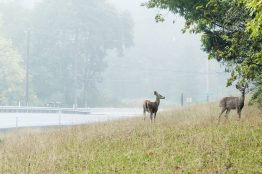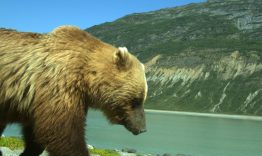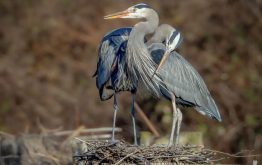The College is thrilled to announce that Dan Brown has agreed to be reappointed director of the School of Environmental and Forest Sciences (SEFS) for a four and a half-year term, effective January 1, 2023, through June 30, 2027. Dan’s research interests focus on land-use change as an outcome of social and ecological processes, and its effects on ecosystems and human well-being.
Read more »Moving from climate science to global action: reflections from Dean Emeritus Lisa Graumlich on COP27
I’ve been thinking — and worrying — about climate change for a long time. In 1980, I came to the University of Washington to pursue a PhD, wrestling with the problem of detecting the fingerprint of human impact on the climate system. The topic held sway with my colleagues but had no traction with the general public. All that has changed, and that change is now visible in many ways across the globe.
Read more »Permanent daylight saving time would reduce deer-vehicle collisions, study shows
In much of the United States, there is a twice-yearly shift in timekeeping between standard time and daylight saving time, or DST, which delays both sunrise and sunset to make mornings darker and evenings brighter. Recently, scientists, policy experts, lawmakers and citizens have debated abandoning the twice-a-year switch and adopting either year-round standard time or DST. A team of researchers at the University of Washington — led by postdoctoral researcher Calum Cunningham and Laura Prugh, an associate professor of quantitative wildlife sciences — have found that one of those options would sharply reduce a hazard common to much of the country: deer-vehicle collisions.
Read more at UW News »Animals in national parks impacted by even just a few people
People often visit U.S. national parks to catch a glimpse of wildlife. But how does our presence impact the animals we hope to see? National park traffic has grown steadily over the past decade, and popular parks like Yosemite and Yellowstone can easily see over a million visitors a year. In these heavily used areas, one might expect animals to change their behavior to avoid humans.
Read more at UW News »Bird behavior influenced by human activity during COVID-19 lockdowns
A new University of Washington study led by Olivia Sanderfoot reports that many birds were just as likely to be found in highly developed urban areas as they were in less-developed green spaces during the peak of the COVID-19 lockdowns. The paper was published Aug. 11 in the journal Scientific Reports. “Our findings suggest that some birds may have been able to use more spaces in cities because our human footprint was a little lighter,” said Sanderfoot, who completed the study as a doctoral researcher in the UW School of Environmental and Forest Sciences and is now a postdoctoral scholar in the Department of Ecology and Evolutionary Biology at the University of California, Los Angeles.
Read more at UW News »





